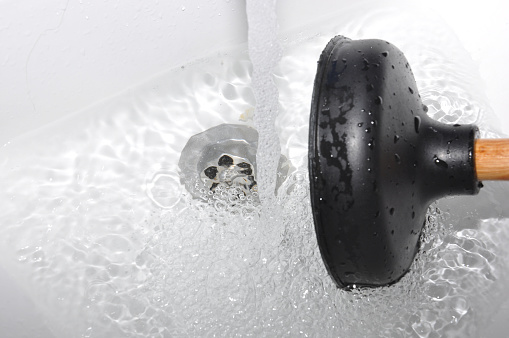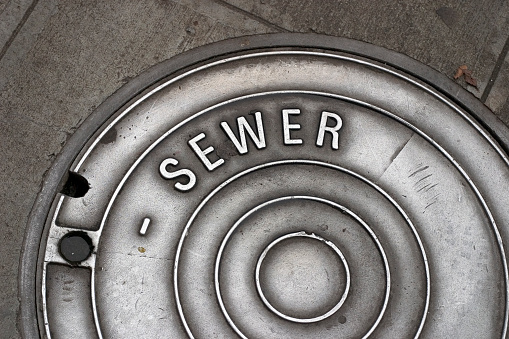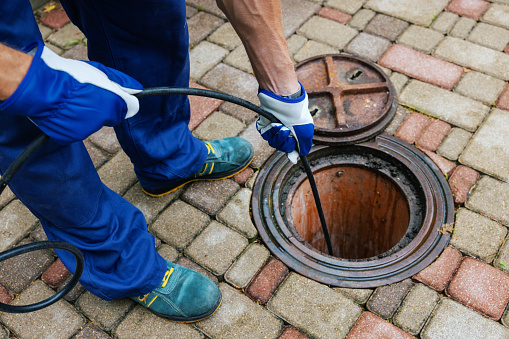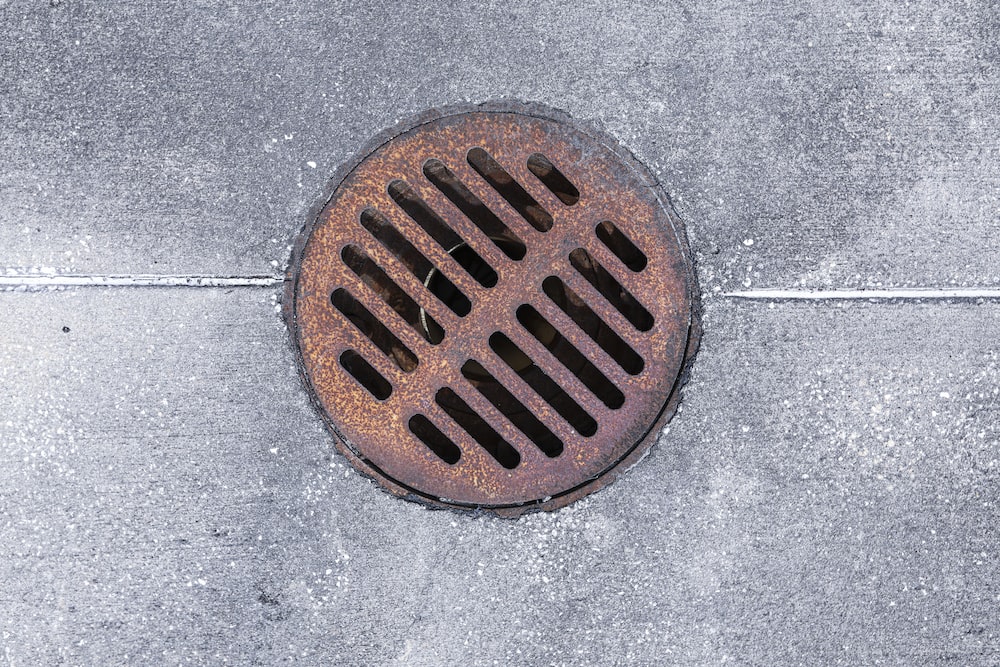Is your basement drain constantly backing up or overflowing? Have you noticed a foul smell coming from your basement drain? Or maybe your basement floor drain is clogged, and you can’t figure out why. Whatever the case, keeping your basement drain clean and free of debris is important to prevent costly repairs down the road.
This guide will teach you everything you need to know about basement drain cleanout, including how to unclog a basement floor drain and what to do if your basement drain is constantly backing up. We’ll also provide some tips on preventing sewer line clogs in the future. Let’s get into it.
About Basement Drain Cleanout
A drain cleanout is a maintenance procedure that involves removing any clogs or debris from your home’s drains. This is typically done with a plunger, a drain snake, or a chemical drain cleaner. Drain cleanouts should be done regularly to prevent clogs and ensure that your drains are functioning properly. They are also often done when a clog is first noticed to clear it before it causes any further damage.
Drain cleanout is important for several reasons, including:
- Prevent Water Damage: Toilets, sinks, and showers that constantly back up or overflow can cause water damage to your home. This is especially true in the basement, where flooding can quickly ruin belongings and lead to mold growth.
- Prevent Flooding: Clogged drains can cause flooding, a major problem in any home. Flooding can damage floors, walls, and ceilings, and it can also lead to mold growth.
- Avoid Costly Repairs: Clogged drains can cause sewer line backups, which can be very costly to repair. Drain cleanouts can prevent these kinds of problems before they start.
Easy Ways To Unclog A Clogged Drain
If you’re dealing with a clogged drain, there are several ways to unclog it. Sometimes, all you need is a plunger to get the job done. You may also need to use a chemical drain cleaner or even snake the drain. Several factors will determine which method is best for your particular situation. The approaches include:
- Hydraulic Sewer Cleaning Methods: It uses pressurized water to break down and push out the clogs in your sewer system. Plumbers use specialized nozzles for different types of clogs. This is an effective method for light to moderate clogs. Also, it is safe for your pipes and won’t damage them.
- Mechanical Sewer Cleaning Methods: It involves using a rod or machine to push or scrape out the debris in your sewer system. Bucket machines are excellent for severe clogs in large sewer pipes. This is a more invasive method but can be very effective for stubborn clogs.
- Chemical Sewer Cleaning Methods: It involves using chemicals to remove a blockage in your pipes. They are, however, used cautiously, as chemicals may damage plants, animals, and the surrounding soils. Biological products that contain enzymes and microorganisms can also be used to clean some sewer systems. This more aggressive method should only be used as a last resort.
Several conventional methods can be used for sewer line cleaning. They include:
1. The Bent Wire Hanger
To clear a minor blockage, start by straightening a conventional wire hanger as much as possible. Create a hook on one end of the hanger and insert it into the drain cover. Gently pull out any items that could be causing the blockage. Avoid pushing the gunk further down the drain. Once you have removed everything, flush the line with hot water to clean it. Also, check to see if any items in the drain need to be removed regularly to prevent future blockages.
2. The Plunger
If the wire hanger doesn’t do the trick, you’ll need to break out the plunger. Start by filling the sink with enough water to cover the plunger’s rubber cup. Place the plunger over the drain and vigorously push and pull it up. The suction from the plunger will dislodge the blockage and clear the drain. Also, make sure to check the blocked drain for any items that could be causing the blockage and remove them.

3. The Drain Snake
If the plunger doesn’t work, it’s time to break out the big gun: the drain snake. Insert the drain snake into the drain and turn it clockwise to catch any debris causing the blockage. Slowly pull the drain snake out of the drain, careful not to push the debris further down the line. Once you have removed the blockage, flush the line with hot water to clean it.
Also, check to see if any items in the drain need to be removed regularly to prevent future blockages.
4. The Vinegar and Baking Soda Solution
Try the vinegar and baking soda solution for those looking for a natural way to clear drain lines. Pour 1/2 cup of baking soda down the drain, followed by 1/2 cup vinegar. Plug the drain with a rag and let the mixture sit for 30 minutes. After 30 minutes, flush the line with hot water to clear the blockage.
Also, be sure to use this mixture as soon as you notice the drain is slowing down so the blockage doesn’t have time to form. Being able to deodorize the drain line is also a bonus.
5. The Boiling Water Solution
If you have a small sewer clog, try pouring boiling water down the drain to see if that clears the plumbing system. Boiling water can help break up grease and soap scum that might be causing the blockage. Just be careful not to pour too much at once, as it might cause the clog to move further down the drain. Use this method sparingly, as it can damage your pipes if used too often.
6. The Wet and Dry Vacuum
A wet and dry vacuum is a great way to unblock a clogged sewer line. To avoid making a mess, you should cover the vent before beginning. You need to create a tight seal over the drain line to make this work.
Adjust the vacuum settings to liquids. This will give it enough power to draw the contents up the pipe and into the bag. Also, try unclogging it with a hanger first. If the hanger doesn’t work, use the wet and dry vacuum.
7. Caustic Soda
Caustic soda may be the answer if you have a clogged sewer drain that is difficult to clear with a plunger or drain snake. Caustic soda, also known as sodium hydroxide, is highly corrosive. It can break through almost any clog, including grease and hair.
Caustic soda should be used with extreme caution, as it can cause serious burns. It should never be used on metal pipes, as it will eat through them. If you must use caustic soda, always wear gloves and eye protection, and be sure to ventilate the area well.
To use caustic soda, pour a small amount down the drain and let it sit for a few minutes. Then, pour a pot of boiling water down the drain to flush away the clog.
8. Salt and Baking Soda
Salt and baking soda can also be used together for a clogged drain to create a powerful cleaning solution. Like the vinegar and baking soda mixture, start by pouring half a cup of salt down the drain. Follow this by pouring half a cup of baking soda down the drain. Allow the mixture to sit for a few minutes before flushing it down with hot water.
This mixture can also be used as a preventive measure to keep your drains clean. Simply pour the salt and baking soda down the drain once a week and flush it away with hot water. Doing this regularly will help break up any build-up in your drains, making clogs less likely to form.
Also, avoid using too much baking soda at once because it can be corrosive to some types of pipes. Use this mixture sparingly if you have an older home with copper or galvanized steel pipes.

9. Dish Detergent
With mechanical methods, the sink is sometimes blocked after a few attempts. If this happens, you can try to use dish detergent as a last resort. Be sure to use a mild dishwashing liquid to avoid damaging your pipes.
To use, first fill your sink with very hot water. Then, add 1/4 cup of dishwashing liquid and let it sit for 15 minutes. After 15 minutes, turn on the cold water and let it run for a few minutes to flush everything out. It is best to avoid using this method too often as it can damage your pipes.
Also Check: How To Install Sump Pump In Crawl Space?
10. Baking Soda, Vinegar, and Water Pressure
If your drain is slow or partially clogged, this method is worth a try. Start by pouring a pot of boiling water down the drain to loosen any grease or food that may be stuck. Once the water has cooled, pour 1/2 cup of baking soda followed by 1/2 cup vinegar. Cover the drain with a plug or a bowl and let the mixture sit for 30 minutes.
After 30 minutes, pour a pot of boiling water down the drain to flush the clog. If the clog persists, you can try this method or move on to a stronger solution.
11. Chemical Drain Cleaners
If you have tried all of the above methods and your drain is still blocked, you may need to use chemical drain cleaners. Be careful to use these products, as they can damage your pipes.
To use, follow the instructions on the product label. Be sure to wear gloves and eye protection when using these products. Also, be sure to ventilate the area well and avoid using them too often.
12. Call a Plumber
If you have tried all the above methods and your drain is still blocked, it is time to call a professional drain cleaning service. A plumber will have the proper tools and expertise to clear your drain quickly and safely. From drain snakes to hydro jetting, they will have the right solution for your clogged drain.

How To Prevent Clogged Sewer Lines?
Prevention is always better than cure; the same goes for your sewer line. Here are some tips from our experts on how you can keep your sewer line clog-free:
1. Use A Drain Strainer
A drain strainer in your sink is one of the simplest ways to prevent a clogged main drain line. All you need to do is ensure that all kitchen debris, like food scraps, coffee grounds, and grease, is caught by the strainer before they go down the drain. This will reduce the amount of buildup in your sewer line and minimize the chances of a clog.
2. Avoid Flushing Foreign Objects
One of the main causes of main sewer line clogs is flushing foreign objects down the toilet. These include sanitary products, hygiene wipes, diapers, and cigarette butts. While it may be tempting to dispose of these items this way, it’s important to remember that they can cause serious damage to your sewer line and lead to a costly repair bill.
3. Invest In Regular Drain Cleaning
Even if you’re careful about what goes down your drains, it’s still important to have them cleaned regularly. This will remove any buildup that may have occurred over time and help to keep your sewer line clear. Drain cleaning also has the added benefit of extending the life of your pipes, so it’s a worthwhile investment in the long run.
4. Know The Warning Signs Of A Clogged Sewer Line
It’s important to be aware of the warning signs of a clogged sewer pipe to take action before the problem gets too severe. These can include slow-draining drains, frequent clogs, gurgling sounds from your drains, and sewage backup. If you notice any of these signs, it’s time to call in a professional for a drain cleaning.
Final Thoughts
While there are many ways that you can keep your basement drain clean, the most important thing is to be proactive. Don’t wait until there’s a problem to take action. By then, it may be too late. Use the tips in this guide to help keep your basement drain clean and clear, so you can enjoy your space without worrying about a clog.
Contact a local plumber if you have any questions or need assistance with your basement drain. They will be able to assess the situation and provide you with the best solution for your needs.
Be sure to check out our other essential crawl space guides.


